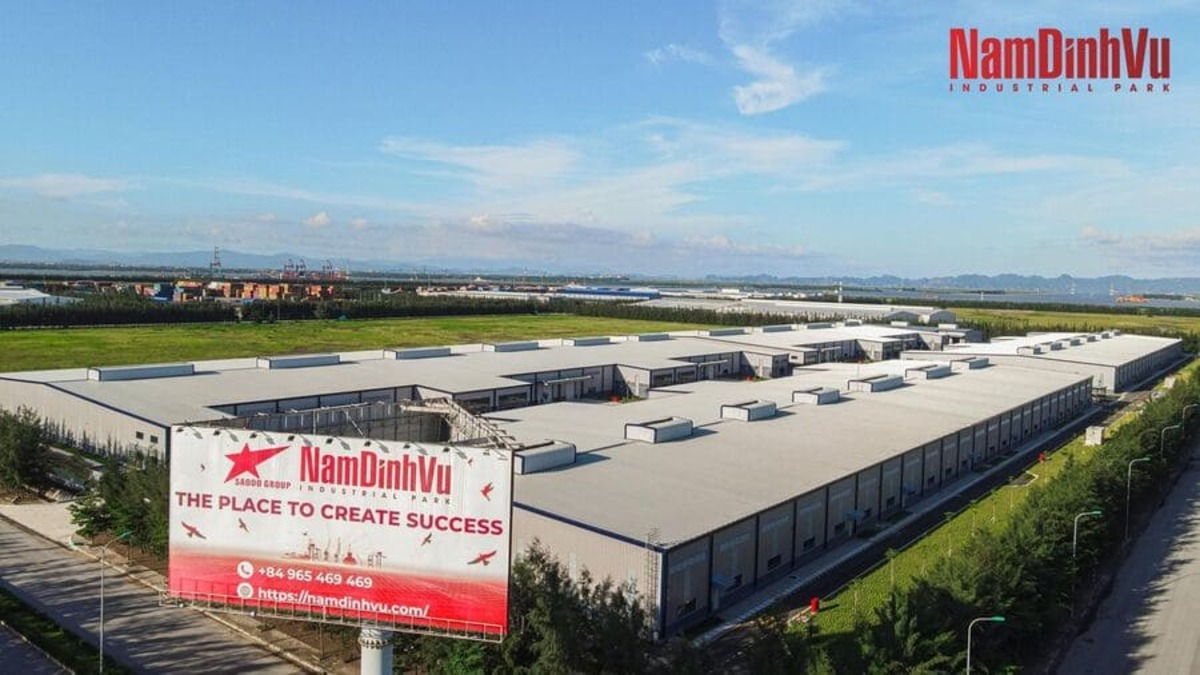Vietnam’s industrial zones have continued to show strong growth in 2024, bolstered by infrastructure developments and favorable government policies. While some regions experienced fluctuations in land absorption, the overall outlook remains positive, attracting steady investment. This article explores the performance of Vietnam’s industrial areas in 2025 and the Key Takeaways for Foreign Investors.
Vietnam Industrial Area Performance 2024
In 2024, Vietnam’s industrial zones showed resilience and growth, especially in the northern and southern regions. Northern industrial zones reached an 80% occupancy rate, while southern zones saw a slightly higher rate of 89%. Notably, the northern zones absorbed over 400 hectares of space, particularly in sectors like electronics and electric vehicles. This reflects the continued attractiveness of Vietnam as a manufacturing hub in the region. In contrast, the southern region had a decline in absorption, occupying only 265 hectares, mostly in Ba Ria–Vung Tau and Long An provinces. Despite this, the overall market sentiment remains positive, supported by ongoing infrastructure improvements and government incentives. Rental prices in the northern regions saw an increase of 4.2%, reaching an average of $137 per square meter, while the southern regions saw a more modest rise of 1.4%, bringing the rate to $175 per square meter. Market experts expect that investment interest will remain steady in the coming quarters, driven by favorable macroeconomic factors and growing demand for high-quality industrial spaces. (1)
Vietnam Industrial Area – Key Industrial Hubs by Region (2)
Northern Vietnam Industrial Area
Northern Vietnam continues to be a key player in the industrial sector, with Hai Phong leading the charge. Nam Dinh Vu Industrial Park ‘s strategic location near Lach Huyen Deep Sea Port offers unmatched logistics advantages, making it a prime spot for multinational companies, particularly in electronics and heavy manufacturing. Additionally, regions like Bac Ninh and Hai Duong are gaining momentum due to the increasing demand for high-tech manufacturing facilities. These areas are experiencing significant infrastructure development, positioning Northern Vietnam as a dominant industrial hub in the region.

Central Vietnam Industrial Area
Central Vietnam, while not as saturated as the northern and southern regions, is gradually emerging as a strong industrial hub. Provinces like Da Nang and Quang Ngai are taking the lead, thanks to their competitive land costs, developing infrastructure, and key projects like the East-West Economic Corridor. The region’s industrial appeal is growing as the government pushes for the establishment of new parks. Sectors like textiles, food processing, and logistics are attracting significant investment, and with continuous improvements in road and transport networks, Central Vietnam’s industrial landscape is set to flourish further.
Southern Vietnam Industrial Area
Southern Vietnam remains the industrial powerhouse of the country, with provinces like Binh Duong, Dong Nai, and Long An leading the charge. These regions continue to benefit from their proximity to Ho Chi Minh City and well-developed logistics networks. Although land absorption has slowed, rental rates in the south remain the highest in Vietnam, reflecting its importance. Ba Ria – Vung Tau is gaining momentum, particularly for heavy industries and logistics, thanks to ongoing developments in deep-water port infrastructure. This makes the south a critical hub for both domestic and foreign investors.
Why Vietnam Industrial Area Attracts Foreign Investors
Vietnam’s industrial zones have become increasingly attractive for foreign manufacturers for several reasons: (2)
- Stable Political Environment: Vietnam offers a highly stable political climate, which is crucial for long-term industrial investments. The country’s government has maintained consistent policies that support industrial growth, further enhancing investor confidence. This stability ensures that businesses can operate with a sense of security and predictability, a key factor for foreign manufacturers planning to set up long-term operations.
- Young and Skilled Workforce: With a median age of around 32 and a rapidly growing tech-savvy population, Vietnam provides a strong labor pool for manufacturing and R&D. The country’s focus on education and skill development in STEM fields has fostered a workforce ready to meet the demands of modern industries. Additionally, labor costs remain competitive, making it an attractive destination for companies seeking efficient and cost-effective solutions.
- High FDI Inflows: Vietnam continues to receive significant foreign direct investment, demonstrating international confidence in the market. Inflows of FDI are consistently rising, particularly in industries such as electronics, manufacturing, and renewable energy. This influx of capital not only strengthens the economy but also contributes to the development of cutting-edge infrastructure and technology, further boosting the industrial landscape.
- Strategic Location: Situated at the heart of Southeast Asia, Vietnam offers easy access to major markets like China, Japan, and ASEAN countries. Its location provides a crucial gateway for trade and commerce, making it a key player in the global supply chain. The country’s ports and logistics infrastructure are continuously improving, facilitating smooth transportation of goods and services across the region and beyond.
- Government Incentives: Attractive tax breaks, simplified investment procedures, and consistent policy support help reduce entry barriers for foreign companies. Vietnam offers various incentives, such as exemptions from certain taxes for a set number of years and reductions on land-use fees, aimed at encouraging foreign investments. These incentives make it easier and more cost-effective for foreign manufacturers to establish and expand their businesses in the country.
- Dynamic Industrial Ecosystem: With over 400 planned industrial parks (and around 300 operational as of 2025), Vietnam provides abundant and diversified options for investors seeking customized solutions. These industrial parks offer state-of-the-art infrastructure, modern facilities, and ready-to-use spaces for a wide range of industries. This dynamic ecosystem not only meets the needs of foreign manufacturers but also encourages innovation, collaboration, and the growth of supply chains within Vietnam.
In conclusion, Vietnam’s industrial zones continue to offer significant opportunities for both domestic and foreign investors. With a combination of strong regional performance, government support, and strategic location, the country remains an attractive destination for manufacturing and industrial development. As infrastructure improves and demand for high-quality industrial spaces grows, Vietnam’s industrial landscape is poised for further expansion in the coming years.
Source:
(1). Vietnam Briefing
(2). Vietnam Incorp Asia
